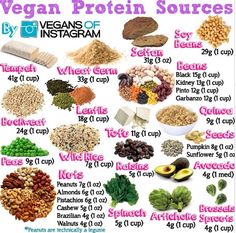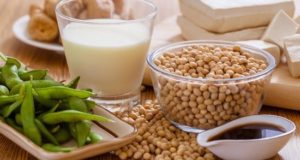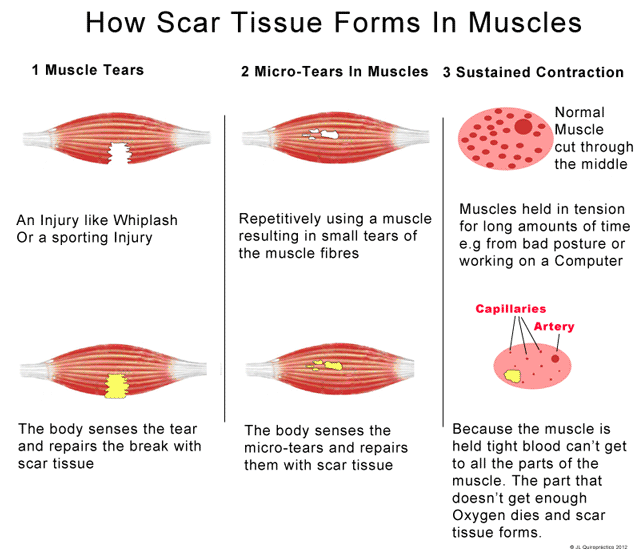
If you’re interested in your diet, whether it’s for weight loss or just healthier eating, you’re going to need to know a few things about the 3 main food groups – Protein, Carbohydrates and Fat. In this article I’ll tell you what each of them is, why you need them, and what foods they can be found in.
Protein
Protein is a part of every living cell in your body, including skin, muscle, tendons, ligaments, hair, and the core of teeth and bones. It also plays a role in numerous other functions like hormones (such as insulin), antibodies which fight off infection, and red blood cells which transport oxygen around the body. One thing it isn’t often used for is energy production. Although it very easily can be this only happens in cases of extremely intense physical exertion or starvation, where not enough carbohydrates are available.
It’s made up of what are called essential amino acids and non-essential amino acids. Non-essential amino acids can be made in the body and there are 12, but essential amino acids can’t and all 8 of these must come from the food we eat.
Sources of protein include meat, eggs, fish, cheese and milk, but also nuts, beans, soy, oats, lentils and peanut butter. Obviously there is no reason a vegetarian shouldn’t be getting enough without having to resort to supplements.
How much is enough though?
Well, that depends on your weight and your activity level. The protein requirements of someone who doesn’t have a physical job and who doesn’t exercise can be calculated by multiplying their body weight in kg by 0.8.
So for a 60 kg individual (132 lbs) this would be 48 g.
If you exercise regularly however, this could be increased from the 0.8 figure to anything up to 2g per kilo for a serious athlete or bodybuilder.
Protein gives 4 calories of energy per gram and should make up about 15% of your daily calorie intake. A diet in which the protein intake is consistently too low, as is possible with a poor vegetarian diet, can affect the benefits I’ve just mentioned. But before you rush out and stock up on protein shakes be aware that too much also has its side effects. If you regularly have 30% more than you actually need you could be doing yourself more harm than good, in some cases causing liver and kidney problems including kidney stones which is just one reason why certain high protein, low carbohydrate diets should be avoided.
Carbohydrates
Carbohydrates have 4 calories per gram and should make up about 55% of your diet. They have several uses in the body. The main one is as an energy source called glucose which is stored in the body as glycogen. Glucose, which you may have seen as an ingredient of some energy drinks, is known as a simple carbohydrate you might better recognize as sugar. This is taken into the body very quickly and won’t satisfy your hunger for long, which is one reason it should ideally be avoided if you’re trying to lose weight. It also has a rapid effect on energy levels giving a quick physical and mental high which is soon followed by a crash.
In contrast the other form, complex carbohydrates, take longer to be digested and provide a slower, steadier release of energy and prevent you feeling hungry for longer.
Examples of complex carbohydrates are rice, pasta, potatoes, beans and oats.
The rate at which each carbohydrate is absorbed is known as its GI, Glycemic Index. Each food can be assigned a figure between 1 and 100 based on this, with pure glucose being absorbed the quickest and therefore assigned a GI of 100. At the other end of the scale, lentils have a GI of just 21 and would therefore be much better to stop you getting hungry for longer and to maintain a steadier energy level. High GI foods also encourage fat storage and therefore weight gain, by forcing glucose and fats already in the bloodstream into cells for storage.
There are no risks associated with consuming too many carbohydrates other than an excess of sugar can lead to the onset of diabetes. Not getting quite enough will lead to low energy levels, but not getting enough for long periods can cause serious health risks if taken to an extreme.
Fat
Fat has 9 calories per gram and should make up about 30% of your diet as it actually has many vital uses in the body. These include protection of internal organs, insulation from the cold, uptake and storage of certain vitamins, insulation of nerve cells, healthy hair and skin, and also as an energy source. As you can imagine, not getting enough fat can cause a lot of health problems, but this obviously isn’t an issue for most people in the developed world who get far too much. As a result they suffer from being overweight, having high blood pressure, and coronary heart disease.
There are 2 types of fat and although both are a necessary part of your diet, consumption of saturated fat should be closely monitored. The main source is from animals and it is solid at room temperature. Examples including butter, lard, cream and meats. What makes it so bad is the amount of cholesterol it contains, too much of which can contribute to heart attacks and strokes.
The other type of fat, unsaturated, mainly comes from plant sources and is liquid at room temperature. Examples include sunflower oil, olive oil, fish and nuts.
Given the uses fat has in the body, too little, which can come with a very low-calorie, low-fat diet, obviously has consequences. These include not being able to absorb and store certain vitamins, less healthy hair and skin, and an effect on nerve cells.
Basically the opposite of all the benefits I’ve just told you about.

Source by David Hields
 Vitamin Agent The Health & Naturalistic Source
Vitamin Agent The Health & Naturalistic Source





